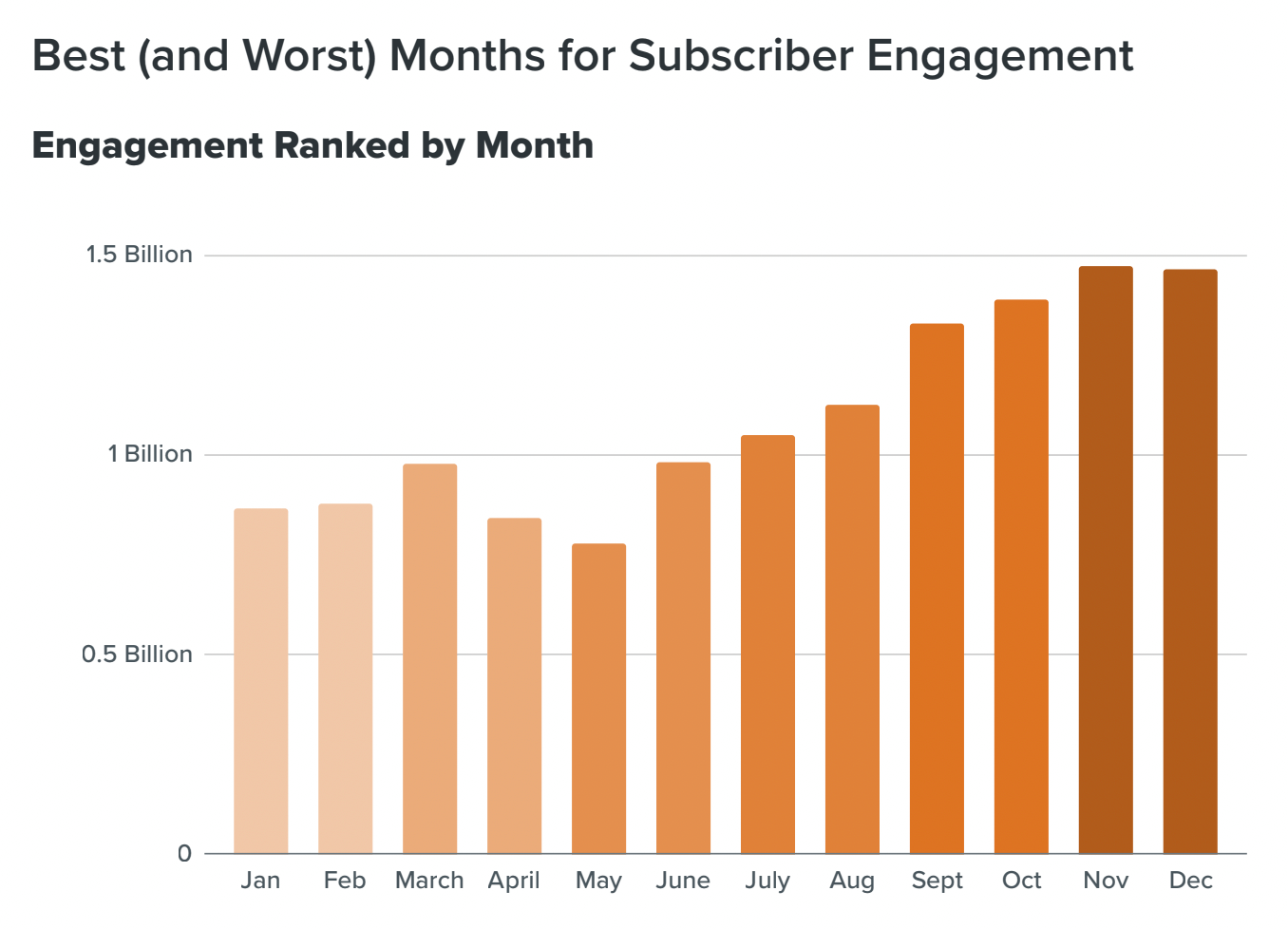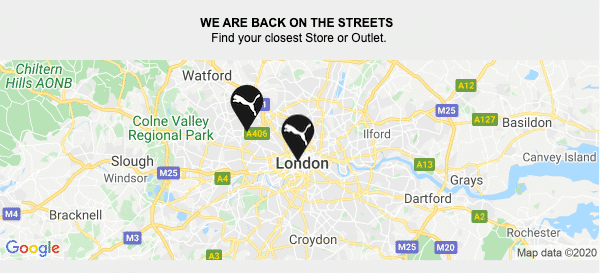Do you hear what I hear? That’s the whooshing sound of hundreds of thousands of holiday emails dashing through the snow on the way to subscribers’ inboxes. (Or if you’re dreading the season, you may catch the ominous clinking chains of the Ghost of Holiday Emails Past.)
November and December are two of the busiest months of the year for email marketers. You’re running through a packed schedule of holidays, including Black Friday, Cyber Monday, Small Business Saturday, Thanksgiving, Christmas, Hanukkah, Diwali, and Kwanzaa. But it’s also the season with the highest email engagement (and that’s saying something!)

Holiday shoppers are busy too—and so are your competitors. With so many emails hitting inboxes this season, you’ll need to stand out. Email personalization and dynamic content are a great way to do that.
But when we polled email geeks for our State of Email Innovations Report, we found that most email marketers stick to the basics. Even though 95% did some sort of personalization, only 3% said they do live or real-time content in their emails.
You don’t need to run email campaigns for every single event, but you do need a strong holiday email strategy that allows you to hit your goals without being a Grinch. In this post, we’ll talk through some email personalization best practices, how to add dynamic content to your emails with a festive flair, and how different industries can experiment with dynamic content for your holiday email marketing efforts this season.
Email personalization best practices for holiday email marketing campaigns
80% of customers are more likely to purchase from a brand that provides personalized experiences. But what makes this time of year extra tricky for email personalization is that it’s often when your subscribers buy for others, not just themselves. Here’s what to keep in mind as you experiment with dynamic content this season:
Get your data organized and ready
The first step to creating a solid holiday email personalization strategy is finding the right data. However, when we asked email marketers what their biggest personalization challenges were, 24% said they didn’t have adequate data. That’s a prerequisite for dynamic content.
We’ll have to muddle through somehow. To power your personalization campaigns, you have access to four different kinds of data:
- Zero-party data is explicitly given to you by your audience, either through basic demographic information from checkout flows, answers to style quizzes, or surveys.
- First-party data is the individual-level data collected from your audience, like browsing data from your website, shopping history, or social media engagement.
- Second-party data is purchased from another company, like consumer trends, reviews, or competitive research.
- Third-party data comes from tracking Internet activity outside of your owned channels, like purchases, browsing history, or media mentions. As privacy laws crack down on third-party cookies, it will become more difficult for marketers to deliver on their goals.
Do an analysis now of the data points you do have and brainstorm campaigns that make use of them. For example, if you have geolocation data, you can run a campaign with information about the closest retail store to your subscriber.

Create a segmentation strategy
The first step toward dynamic content is knowing who in your audience gets what based on where they are in their personalized customer journey.
A strong segmentation strategy will guide your holiday marketing efforts. Even if you keep most of the email content the same, you can use it to change out the cta button or email subject line.
You can separate your subscribers into several target audiences by:
- Email Engagement: Going into the holiday season, you’ll want to separate out anyone from your email list who hasn’t engaged with your emails recently. If they don’t want to hear from you, get them off your list before the holiday hullabaloo so as not to risk your deliverability.
- Purchase Behavior: What products have they purchased in the past? Pair those with similar products this year, whether that’s a new colorway, special holiday edition, or the next generation of your products or solutions.
- Browsing Behavior: Where do your subscribers go on your website? If they only read a certain blog category, for example, they’re probably more interested in that section than the rest of your website. Similarly, if they never browse your men’s department, they’re probably not looking for men’s items.
- Opt-In Information: When in doubt, ask! Your subscribers know who they need to make purchases for this season, so if you’re not sure, send out an email campaign asking them which categories or products they’re interested in and sort them for the holiday season accordingly as you send out gift guide campaigns.
This may not look like your segmentation strategy at other times of year, and that’s okay. (Gift-giving throws everything a little bit off.)
Harness the power of email personalization
Discover how to better connect with your audience, deliver tailored content, and drive engagement with email personalization.
Go back to last year’s holiday email campaign wins and fails
What worked last year? What could have been better? Evaluating the metrics from your previous black friday email campaigns, like open rates, click-through rates, and conversion rates will help you determine which elements of your emails are worth experimenting with, from your subject lines to calls-to-action.
Now is a great time to reflect on your wins and what you could improve as you build your new holiday campaigns. Remember, your data changes dramatically during the holiday season, so it’s better to compare dreidels to dreidels here.
You don’t have to re-invent your holiday campaigns, but you can refresh them with some dynamic content. Identify which ones you want to experiment with and which are best left alone first.
Then, set clear, measurable goals and key performance indicators (KPIs) that align with your overall business objectives.
This gives you a base for your experimentation. While the holiday rush isn’t a great time to conduct big A/B testing projects, it may be worth running a few tests on subject lines, landing pages, and email design as you build out your holiday offers before it gets too busy.
Include a fallback option no matter what
Any time you use personalization, you should include a fallback for when you don’t have the right piece of data (or when email clients don’t support a specific type of dynamic content). That’s even more true during the holiday season, when the stakes are higher.
The biggest way to turn off a potential customer is by saying, “Great holiday deals for FIRSTNAME!” in the subject line instead of, y’know, their actual name.
Supercharge your holiday campaigns with dynamic email content
Engage your audience with personalized messages, tailored offers, and festive cheer that drives results. Start using dynamic content to make your emails sparkle this season!
5 types of dynamic content for your holiday email campaigns
If you’re looking for a little festive sparkle, dynamic content can make your holiday email campaigns shine. Here are a few dynamic content ideas to try this holiday season:
1. Create excitement with Countdown Timers
Nothing says “buy now!” like a ticking clock for your limited-time offers.

A sense of urgency is what separates maybe-shoppers from paying customers. Countdown Timers are also a great way to build trust with your email subscribers—no one wants to buy an item only to have it get discounted in a few days. Giving them a heads-up builds excitement and gets more customers through your (virtual or IRL) doors. You can even change your CTA to reflect the amount of time left, too.
Just make sure that you’re not misleading your customers with your countdown timer—if the offer ends at midnight, it should actually end (and not be replaced by a comparable offer within 24 hours, either.)
2. Promote a local event or live drop with Add-to-Calendar
Holiday shopping is only one part of this very busy season for your subscribers. Every organization seems to have an event this month, whether it’s the school concert or the office’s end-of-year party. While your product launch may feel like big news to you, your subscribers may forget with all the noise. Make it easy for them to attend an event, product drop, or sale by offering a calendar link using Add-to-Calendar right in your Black Friday or Cyber Monday email.
3. Increase engagement with an irresistible Scratch-Off reveal
Subscribers wait for Black Friday deals all year long. But you can be coy about it to build excitement by using a Scratch-Off reveal for their discount code or coupon.
Scratch-Off lets you run personalized deals for your subscribers and gives them a little bit of mystery, so they just have to click. Whether you vary what’s underneath the scratch-off or simply want to create a little bit more engagement, this tactic is always a winner.
4. Content Automation showcases recommended or popular gift ideas
One of the best ways to include dynamic content is to recommend products you already know are popular—or are usually purchased together.

For the holiday shopping season, that means curating holiday gift guides so your subscribers can find the perfect gift for their loved ones based on your audience segmentation. Litmus’ Content Automation lets you use product feeds to showcase your bestsellers or your guides to make it easy for your subscribers to click “buy.”
5. Get more clicks with Interest Signals
We all need a little validation, and interest signals allow you to bring the same kind of “everybody who’s anybody” vibes that social media excels at to your emails.

(Yes, we created custom emojis with Litmoose. Isn’t he the cutest?)
Interest Signals let your subscribers know who else is paying attention to a certain product or event. Create excitement (and maybe a little FOMO) by showing your subscribers they’re not alone. Social proof like this can help create a sense of urgency and validate your gift guides.
Check out these dynamic email content examples to get a feel for how this looks in the wild.
Craft winning holiday emails and boost engagement
Discover strategies for creating effective holiday email campaigns that will make you stand out during the busiest time of year.
How different industries use dynamic content during the holiday sprint
You don’t need to include every single whiz-bang element in every campaign. Instead, think about mixing a variety of elements, such as GIFs, special offers or holiday deals, and visuals to drive sales.
Interactive Elements:Make Emails More Visually Compelling | Personalization Elements:Personalize the Content based on your data | Real Time/Open Time Personalization:Make Emails More Visually Compelling |
|---|---|---|
| Animated GIFs | Text-Based Personalization | Live Polls |
| CSS Animators | Dynamic/Personalized Images | Countdown Timers |
| AMP for Email | Content Automation | Sentiment Trackers |
| Social Media Feed Integrations | ||
| Scratch-Offs | ||
| Add-to-Calendar Buttons | ||
| Rule-Based Images |
Here’s what that looks like in action across different industries with a few email examples:
Retail and eCommerce
Retailers can use email personalization for eCommerce in almost every type of campaign this holiday season, whether offering secret discounts via scratch-offs or triggered abandon cart emails. But where retailers can really make the most of dynamic content is with personalized product recommendations, like this email:
Source: Really Good Emails
At the bottom of this email is an image of a series of Danner’s biggest products, which could easily be changed out based on browsing behavior, past purchases, or recommended gifts by audience segment.
Healthcare
This time of the year is often a lead-up to a big wellness push in the new year. Plant the seeds for health campaigns like Dry January or New Year’s Resolutions in general with holiday-themed patient engagement messages and reminders about their annual check-up, if they haven’t scheduled it for the following year.
Finance
“Festive” and “finance” don’t usually go together, but you can still run holiday-specific campaigns, whether that’s a classic thank you for your business at the end of the year or offering holiday budgeting tools and financial tips based on demographics or current financial products, like this email:
Source: Really Good Emails
Take this email up a notch with a dynamic content block showing previous Amazon browsing data or similar products based on what’s currently in the subscriber’s Amazon cart.
Marketing and media agencies
Marketers are extra busy this time of year, so make the most of their time by personalizing your newsletters and content based on their interests. This is also a great time to poll your audience to see what topics they want to hear more about in the new year.
Or you can lean into the holiday season, like email marketing agency Jarrang did with their interactive advent calendar showing the team as a thank-you for a great year:
Source: Really Good Emails
Travel and hospitality
Hotels, restaurants, airlines, and tour operators have a chance to get in on the holiday fun as more shoppers look for experiences instead of things. This is a great time to reach out to previous travelers or diners and offer them special rates on holiday packages and invite them to return.
This email highlights low fares from the subscriber’s closest destination airport:
If you’re unsure how to get started, we have a whole gallery of awesome holiday email templates ready for you (and they’re optimized for mobile devices, natch). Whether you need a boost for your holiday sales, a last-minute shipping email campaign, or a gift card campaign, we have you covered.
Send personalized holiday emails with Litmus Personalize
Engage your audience with personalized messages, tailored offers, and festive cheer that drives results. Start using dynamic content to make your emails sparkle this season without needing complex code.
Drive engagement with dynamic content
Deliver tailored content without complex code. Use quick-start templates or build from scratch with ease.

